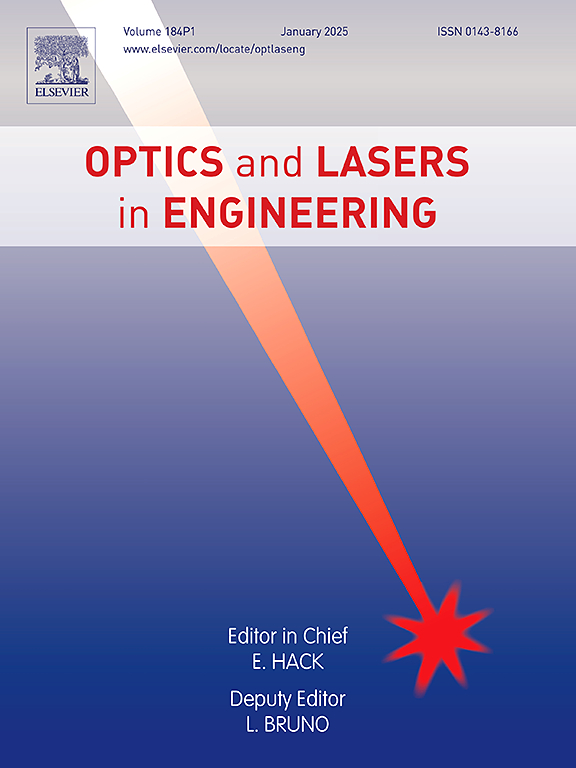Cascaded Fabry-Perot cavity and fiber Bragg grating on sapphire fibers for high-temperature strain sensing
IF 3.5
2区 工程技术
Q2 OPTICS
引用次数: 0
Abstract
High-temperature strain sensors are key elements for several applications. Key issues of the existing devices include the difficulties of sensor operating above 1000°C as well as the very strong thermal effect under high temperatures introducing significant bias on the strain measurement. Here we developed a cascaded Fabry-Perot cavity and fiber Bragg grating strain sensor fully integrated on sapphire fibers, permitting a sufficient temperature compensation and strain measurement up to 1150°C temperature. A three-point adhesive bonding process is proposed to greatly improve the adhesion performance, and hence the robustness of the device at high temperatures. Experimental results show that the fabricated strain sensor can achieve a measurement range of ±1000 με at temperature up to 1150°C. The experimental results show that the measurement accuracy is not more than 5% at room temperature. the measurement accuracy is significantly decreased at high temperature, and the maximum strain measurement error is 14% at 1150°C.
用于高温应变传感的蓝宝石光纤上的级联法布里-珀罗腔和光纤布拉格光栅
高温应变传感器是多种应用的关键元件。现有设备的主要问题包括传感器难以在 1000°C 以上的温度下工作,以及在高温下极强的热效应会给应变测量带来显著偏差。在这里,我们开发了一种级联法布里-珀罗腔和光纤布拉格光栅应变传感器,完全集成在蓝宝石光纤上,允许充分的温度补偿和应变测量,最高温度可达 1150°C。该器件采用了三点粘合工艺,大大提高了粘合性能,从而增强了器件在高温下的稳健性。实验结果表明,所制作的应变传感器可在高达 1150°C 的温度下实现 ±1000 με 的测量范围。实验结果表明,测量精度在室温下不超过 5%,而在高温下测量精度明显下降,1150°C 时最大应变测量误差为 14%。
本文章由计算机程序翻译,如有差异,请以英文原文为准。
求助全文
约1分钟内获得全文
求助全文
来源期刊

Optics and Lasers in Engineering
工程技术-光学
CiteScore
8.90
自引率
8.70%
发文量
384
审稿时长
42 days
期刊介绍:
Optics and Lasers in Engineering aims at providing an international forum for the interchange of information on the development of optical techniques and laser technology in engineering. Emphasis is placed on contributions targeted at the practical use of methods and devices, the development and enhancement of solutions and new theoretical concepts for experimental methods.
Optics and Lasers in Engineering reflects the main areas in which optical methods are being used and developed for an engineering environment. Manuscripts should offer clear evidence of novelty and significance. Papers focusing on parameter optimization or computational issues are not suitable. Similarly, papers focussed on an application rather than the optical method fall outside the journal''s scope. The scope of the journal is defined to include the following:
-Optical Metrology-
Optical Methods for 3D visualization and virtual engineering-
Optical Techniques for Microsystems-
Imaging, Microscopy and Adaptive Optics-
Computational Imaging-
Laser methods in manufacturing-
Integrated optical and photonic sensors-
Optics and Photonics in Life Science-
Hyperspectral and spectroscopic methods-
Infrared and Terahertz techniques
 求助内容:
求助内容: 应助结果提醒方式:
应助结果提醒方式:


